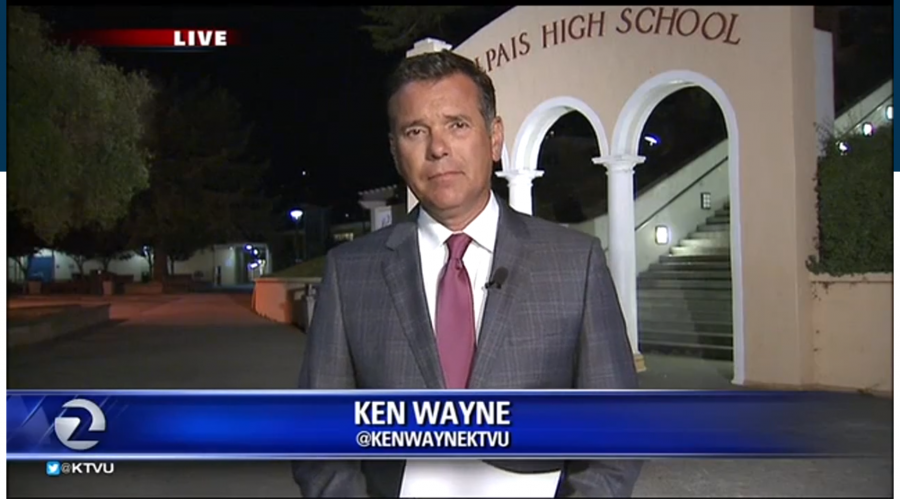Last month, news trucks from KRON 4, KVTU, KGO, and NBC Bay Area descended upon the parking area in front of Gus Gym after three Tam students were hospitalized due to the effects of Coricidin pills (widely referred to as “skittles” in the wake of the incident). On the afternoon of October 21, KTVU’s Ken Wayne interviewed bystanders, among them Tam seniors James Grunigen and Kent Sawyers, about their perceptions of Tam’s drug culture and the dangers of consuming illicit substances.
The resulting news segment (which aired on KTVU Channel 2 and was posted on KTVU’s website) not only painted an entirely inaccurate and misleading image of Tam’s drug culture and student body as a whole, but exhibited reprehensible journalistic strategies.
The premise adopted by Wayne’s KTVU crew was that “skittles parties,” described in the KTVU segment as gatherings where Tam students take pills from bowls containing an assortment of prescription and over-the-counter drugs, have become an ingrained issue in the Tam community. “A skittle party or pill party is apparently where a group of students get ahold of prescription drugs, sometimes by raiding their parents [sic] medicine cabinet and putting them all into a single bowl to randomly sample,” read the story posted to KTVU’s website accompanying the video. After the video was released, Tam students expressed surprise at KTVU’s allegations of “skittles parties” taking place in the Tam community. Among dozens of students interviewed by Tam News reporters, few had heard of skittles parties taking place at Tam prior to the release of KTVU’s segment. While a handful of students might abuse over-the-counter drugs such as Coricidin each year, neither “skittles parties” nor general over-the-counter drug use are a widespread problem at Tam.
KTVU’s reporting reflected this reality, as Wayne was unable to procure sources to provide legitimate evidence that “skittles parties” have ever occurred among Tam students. Grunigen said that he had spoken to “a few” people who had attended skittles parties, but apart from this statement, KTVU’s sources (such as Sawyers, Novato High School parent Jeff Stewart, and Tam parent Amy Utstein) provided personal opinion on the phenomenon of prescription and over-the-counter drug use — not personal experiences of having attended a skittles party, or of having a friend or child who had attended one. Wayne even described the evidence of skittles parties having occurred at Tam “anecdotal” in the closing of his segment.
Evidence of skittles parties having occurred at Tam was so sparse that KTVU’s editing crew took one of Grunigen’s quotes out of context, according to Grunigen, in order to better support their story. Grunigen was quoted as saying, “I don’t often get talked into it, but I do consider it, I know I do. It’s just instinct.” After the story aired, Grunigen told Tam News reporters that the segment was edited to make it appear as though he was referring to Coricidin when the question posed to him by Wayne was a general one about peer pressure that included no direct mention of drugs. In the final version of the video, Grunigen’s statement comes at a point that makes it appear as though he feels drawn to consuming drugs, when Grunigen insists that was not his intention.
The sloppy KTVU piece not only makes Grunigen look bad, but also formulates a false image of the Tam student community as drug-addled and unhealthy. Students reported having to explain to friends and relatives that Tam is not a dangerous community riddled with drugs. KRON 4, KGO and NBC Bay Area also ran stories that, like KTVU’s, relied on anecdotal evidence to spin an isolated incident into a piece about an apparent systematic problem that would draw a large audience of fearful parents.
Journalism should be produced to educate, not to attract views or to make money — especially when the resulting inaccuracies and anecdotal speculation smears the image of an educational establishment such as Tamalpais High School (not “Mount Tamalpais High School,” as Tam was identified in KTVU’s piece).


